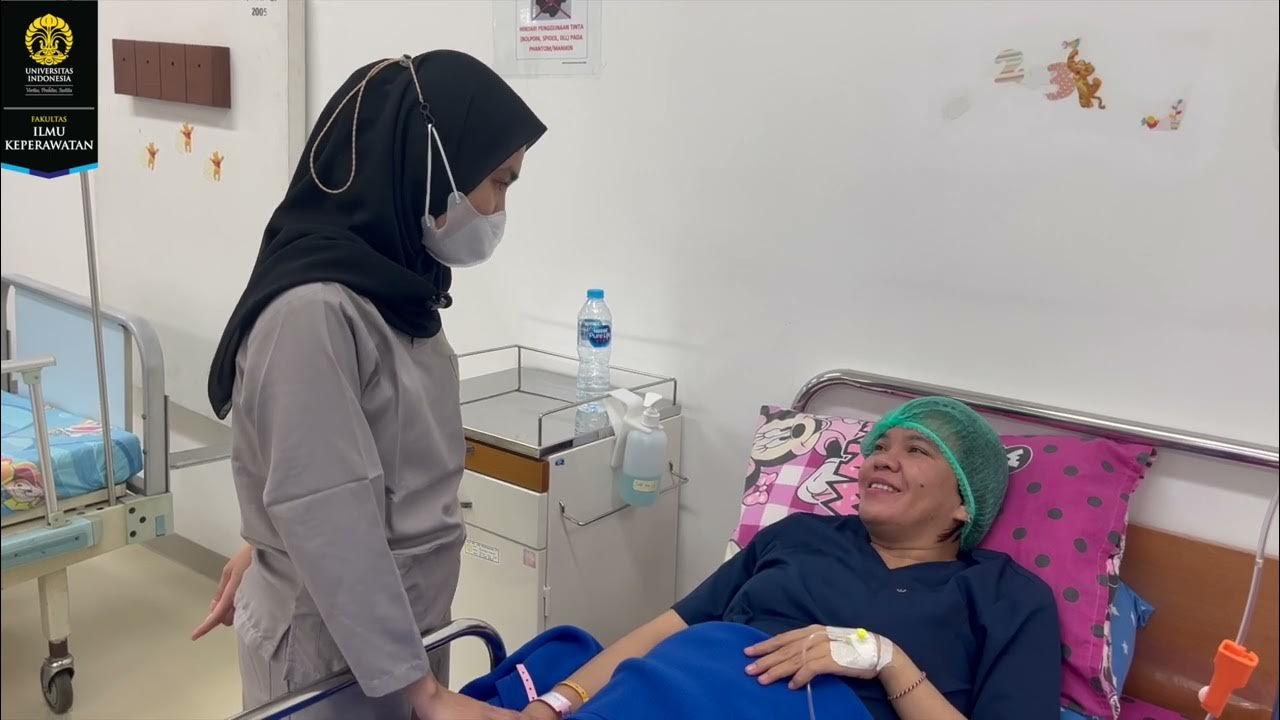Roleplay Komunikasi Terapeutik Pada pasien Dewasa #ARSuniversity
Summary
TLDRThis video showcases a therapeutic communication scenario in a healthcare setting, where a team of medical professionals—including nurses, a doctor, and a family member—interact with a patient before, during, and after surgery. The video emphasizes the importance of clear, compassionate communication, particularly in obtaining consent, explaining procedures, addressing concerns, and ensuring post-operative care. Through respectful dialogue and careful attention to patient needs, the team ensures the patient feels informed, supported, and well cared for throughout their medical journey.
Takeaways
- 😀 Clear introduction of roles: The video opens with a brief introduction of each participant and their role in the scenario, highlighting their characters as healthcare professionals and family members.
- 😀 The role of therapeutic communication: The healthcare team engages in effective communication with the patient, ensuring clarity about the procedures, updates, and expectations.
- 😀 Emphasis on vital signs assessment: The nurse performs an initial assessment of the patient's vital signs, establishing a baseline and reassuring the patient of their normal levels.
- 😀 Informed consent process: The patient is asked to sign an informed consent form before the planned surgery, indicating that they understand the medical procedures and agree to them.
- 😀 Coordination for surgery scheduling: After confirming the patient's readiness, the nurse communicates the surgery schedule to the patient and family, and assures that any changes will be conveyed promptly.
- 😀 Preoperative instructions: The patient is given clear guidelines for preparation, such as fasting before the surgery and understanding the timing of the operation.
- 😀 Postoperative observation: The nurse monitors the patient after surgery for any complications, such as dizziness or nausea, and communicates with the doctor regarding the patient's condition.
- 😀 Collaborative care: The team works collaboratively to address the patient's concerns, such as low blood pressure, and ensures that the doctor is informed about any changes in the patient's condition.
- 😀 Continuous patient monitoring: The patient's condition is carefully monitored in the hours following surgery, with a focus on relieving symptoms like dizziness and ensuring recovery is progressing.
- 😀 Discharge instructions: The nurse prepares the patient for discharge, offering instructions for post-surgery care, including medication management and follow-up appointments with the doctor.
Q & A
What is the main purpose of the video?
-The video is created to fulfill the assignment for the Therapeutic Communication in Adult Patients course. It demonstrates communication between healthcare professionals and patients, focusing on effective patient care in various medical scenarios.
Who are the key participants in the video, and what roles do they play?
-The key participants in the video are Ayu (Nurse 1), Dini (Nurse 2), Rasti (the Patient), Fauzan (the Doctor), and a family member. Each plays a role in communicating medical information, addressing concerns, and ensuring proper patient care.
What is the significance of informed consent in the script?
-Informed consent is an essential part of the medical procedure. Nurse Ayu explains the need for the patient to sign the consent form before the surgery, ensuring the patient is fully informed about the planned action and gives legal permission.
How does the nursing team address the patient's post-operative concerns?
-The nursing team, especially Nurse Dini, checks on the patient’s vital signs, observes any symptoms like dizziness, and reports them to the doctor. They reassure the patient and ensure that any concerns are communicated to the doctor for appropriate action.
Why does Nurse Ayu monitor the patient's blood pressure in the script?
-Nurse Ayu monitors the patient’s blood pressure to check for any abnormalities that may explain the patient’s dizziness. The low blood pressure is identified as a potential cause, and appropriate measures are taken to address it.
What action does the doctor take in response to the patient's symptoms?
-Doctor Fauzan checks the patient’s condition, confirming that the dizziness is linked to the patient's blood pressure. He suggests observation for 1-2 hours and provides instructions to the nursing team to administer medication if necessary.
How is the communication between healthcare professionals and the patient handled?
-Communication is handled with empathy and clarity. Healthcare professionals introduce themselves, explain procedures, and ensure the patient’s understanding. They also provide updates and instructions for post-operative care, maintaining open communication with the patient and their family.
What does the discharge process involve in the video?
-The discharge process involves informing the patient that they are clear to leave, providing post-discharge instructions (such as resting and taking medication), and scheduling a follow-up visit. The healthcare team ensures the patient is comfortable with the discharge process.
What role does the family member play in the script?
-The family member's role is to support the patient and stay informed about the patient's condition. They are kept in the loop regarding the medical procedures and are expected to assist with the patient’s recovery at home.
How does Nurse Dini respond to the patient's complaint of nausea and dizziness?
-Nurse Dini responds by checking the patient’s blood pressure and identifying that the dizziness may be due to low blood pressure. She reassures the patient and informs the doctor to address the symptoms properly.
Outlines

Cette section est réservée aux utilisateurs payants. Améliorez votre compte pour accéder à cette section.
Améliorer maintenantMindmap

Cette section est réservée aux utilisateurs payants. Améliorez votre compte pour accéder à cette section.
Améliorer maintenantKeywords

Cette section est réservée aux utilisateurs payants. Améliorez votre compte pour accéder à cette section.
Améliorer maintenantHighlights

Cette section est réservée aux utilisateurs payants. Améliorez votre compte pour accéder à cette section.
Améliorer maintenantTranscripts

Cette section est réservée aux utilisateurs payants. Améliorez votre compte pour accéder à cette section.
Améliorer maintenantVoir Plus de Vidéos Connexes

Tugas Komunikasi Terapeutik Kelompok 5 Kelas 1A

Komunikasi dalam Keperawatan: Komunikasi Terapeutik pada Keluarga

ROLE PLAY " PADA PASIEN HIPERTENSI --KELOMPOK 2

Komunikasi Terapeutik dalam mengatasi Klien Marah, Rewel, dan Komplain

Edukasi Praktikum SKP 4 _ Kepastian Tepat Lokasi, Tepat Prosedur, dan Tepat Pasien Operasi

Obtain and Document Patient Information
5.0 / 5 (0 votes)
